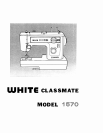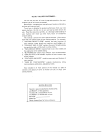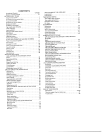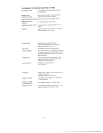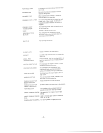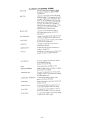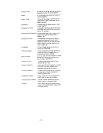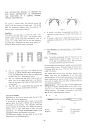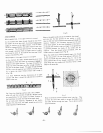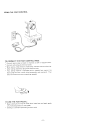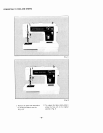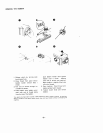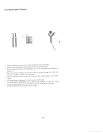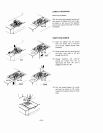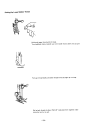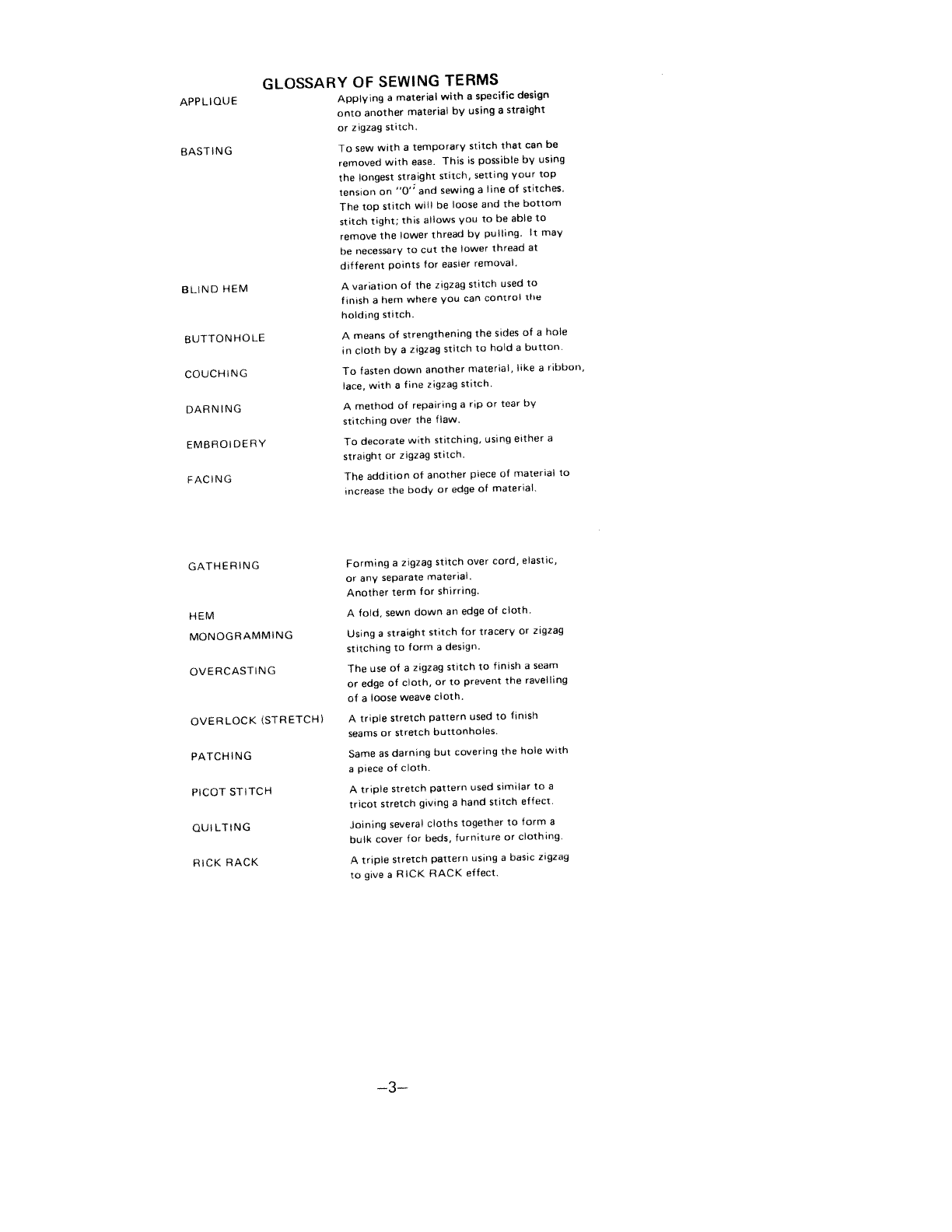
GLOSSARY
OF
SEWING
TERMS
APPLIQUE
Applying
a
material
with
a
specific
design
onto
another
material
by
using
a
straight
or
zigzag
stitch.
BASTING
To
sew
with
a
temporary
stitch
that
can
be
removed
with
ease.
This
is
possible
by
using
the
longest
straight
stitch,
setting
your
top
tension
on
“0”
and
sewing
a
line
of
stitches.
The
top
stitch
will
be
loose
and
the
bottom
stitch
tight;
this
allows
you
to
be
able
to
remove
the
lower
thread
by
pulling,
It
may
be
necessary
to
cut
the
lower
thread
at
different
points
for
easier
removal.
BLIND
HEM
A
variation
of
the
zigzag
stitch
used
to
finish
a
hem
where
you
can
control
the
holding
stitch.
BUTTONHOLE
A
means
of
strengthening
the
sides
of
a
hole
in
cloth
by
a
zigzag
stitch
to
hold
a
button.
COUCHING
To
fasten
down
another
material,
like
a
ribbon,
ace,
with
a
fine
zigzag
stitch.
DARNING
A
method
of
repairing
a
rip
or
sear
by
stitching
over
the
flaw.
EMBROIDERY
To
decorate
with
stitching,
using
either
a
straight
or
zigzag
stitch.
FACING
The
addition
of
another
piece
of
material
to
increase
the
body
or
edge
of
material.
GATHERING
Forming
a
zigzag
stitch
over
cord,
elattic,
or
any
separate
material.
Another
term
for
shirring.
HEM
A
fold,
sewn
down
an
edge
of
cloth.
MONOGRAMMING
Using
a
straight
stitch
for
tracery
or
zigzag
stitching
to
form
a
design.
OVERCASTING
The
use
of
a
zigzag
stitch
to
finish
a
seam
or
edge
of
cloth,
or
to
prevent
the
ravelling
of
a
loose
weave
cloth.
OVER
LOCK
STRETCH)
A
triple
stretch
pattern
used
to
finish
seams
or
stretch
buttonholes.
PATCHING
Same
as
darning
but
covering
the
hole
with
a
piece
of
cloth.
PICOT
STITCH
A
triple
stretch
pattern
used
similar
to
a
tricot
stretch
giving
a
hand
stitch
effect.
QUI
LTING
Joining
several
cloths
together
to
form
a
bulk
cover
for
beds,
furniture
or
clothing.
RICK
RACK
A
triple
stretch
pattern
using
a
basic
zigzag
to
give
a
RICK
RACK
effect.
—3--



